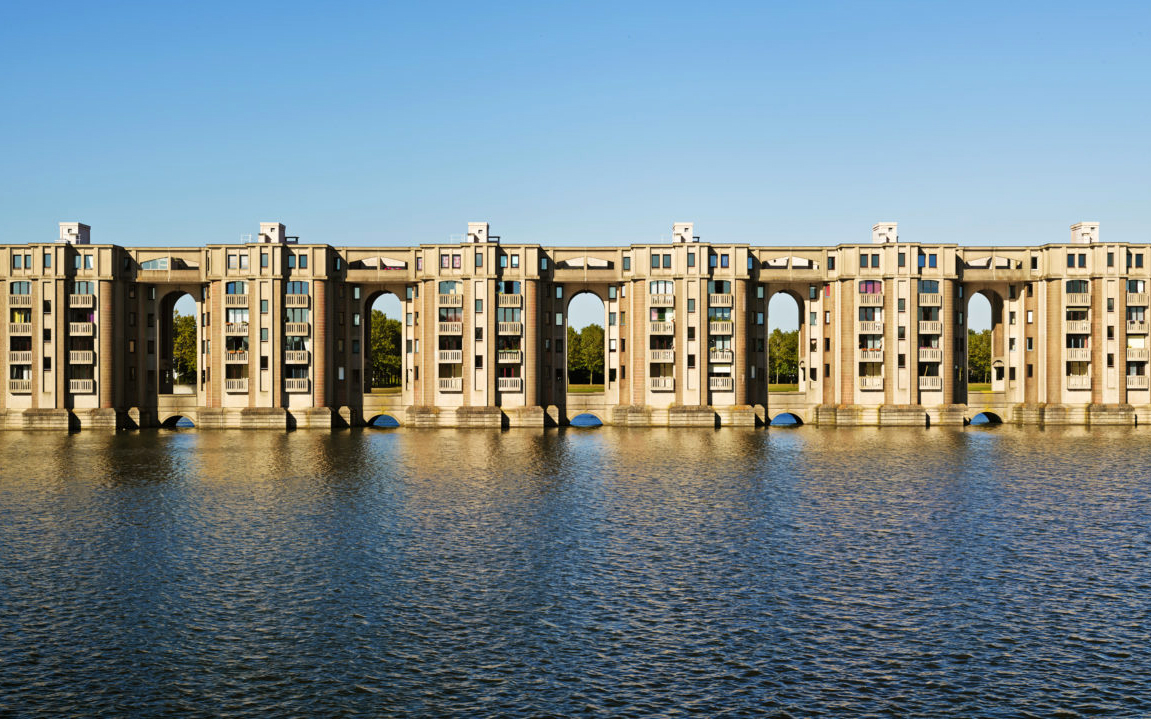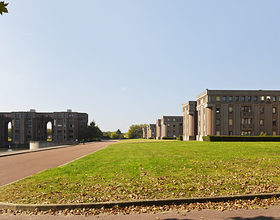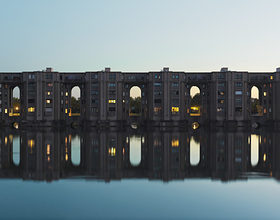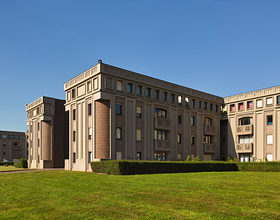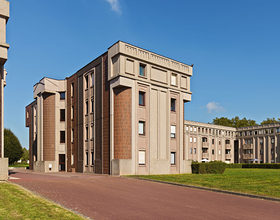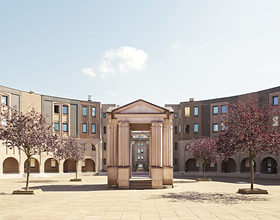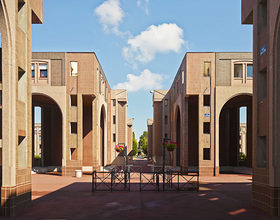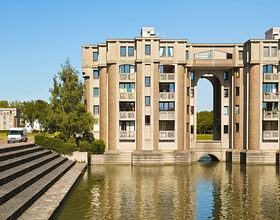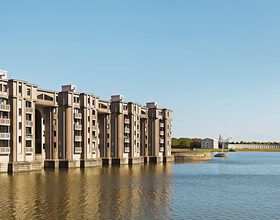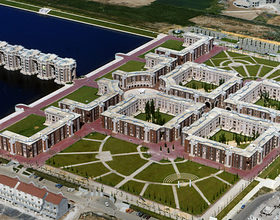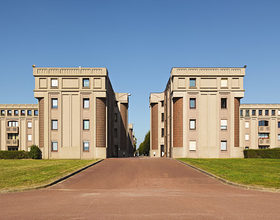LES ARCADES DU LAC
-
This, the first major project by the Taller de Arquitectura to be built in France, forms part of the Villes Nouvelles policy which the French government adopted for the outskirts of Paris: whole towns created from scratch in order to ease the congestion in the city centre and promote orderly growth, while avoiding as far as possible the creation of mere suburbs. As well as being the first of Bofill’s constructions in France, this scheme constitutes a significant landmark in the history of the Taller de Arquitectura.
A product of the darkest moment of the crisis of the 70s, this is a project which seeks to resolve the acute housing problem speedily and economically. The form and distribution of the blocks of apartments is based on the elements of a French Garden, introducing a considerable change of scale and transforming the hedges into buildings. This layout made it possible to generate the public spaces, basic to the formation of the town: the street and the square; the street as the place of circulation, and the square, as the place for meetings and get-togethers. Thanks to the large underground car park which links all the blocks together, all of the streets are exclusively pedestrian, some of them flanked by porticoes.
The orthogonal layout of the blocks, streets and squares also evokes a solution adopted on a number of historic occasions, from the Hippodamus of Miletus to New York, by way of La Valette and Ildefons Cerdà’s Barcelona. The simplicity of the orthogonal organization is amply justified by the functional efficiency, all the more so in times of crisis such as the period from which the scheme dates. The compositional analysis of the French Garden was not restricted to a reproduction of its forms, but was a genuine attempt at creating a Garden City, in which the vegetation and the lake play a fundamental part. The notable presence of the lake prompted the construction of aqueduct and the form adopted for new blocks of housing built out over the water in a return to the famous French tradition of building castles on bridges, especially in the Loire region.
“Le Viaduct” a complex of 74 apartments, was actually built out over the artificial lake. Access to the apartments is at ground level, by way of a pedestrian street composed of the little bridges which communicate the ground floors of each of the six blocks. The vertical circulation nuclei occupy the central part of the north façade, and all of the rooms are exterior.
“Les Arcades du Lac” contains 389 subsidized apartments grouped in four square blocks with a spacious interior courtyard, accessible from the street. The buildings consist of ground floor and three upper floors. All apartments have dual orientation. The stairs are located in pavilions which project out from the façade, serving two doors to a landing and giving direct access to the car park. The program includes public spaces with plazas and gardens on the shores of the artificial lake.
Photo credits: Ricardo Bofill Taller de Arquitectura
1870 Projects

